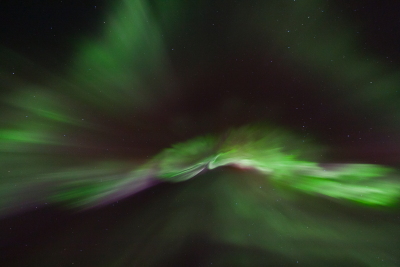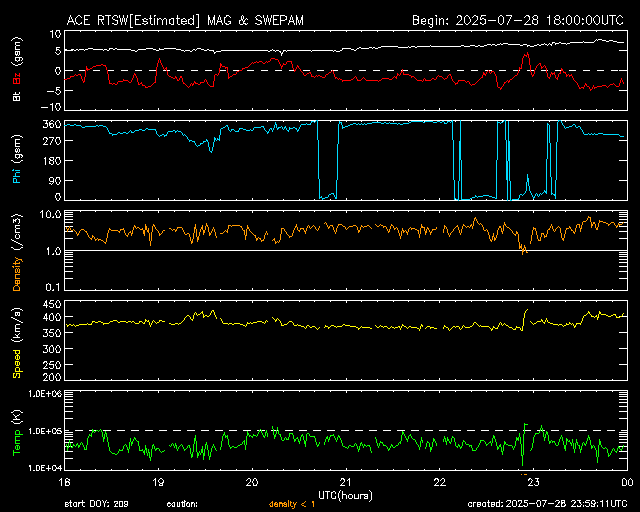How to forcast aurora / Realtime Northern Lights observation

- Look at www.spaceweather.com and see if there area notifications about northern lights. Do also check if there are any sunspots.
-
 2. ACE is a satellite witch main purpose is to monitor the solar wind. . It is located in a gravitational equilibrium point, called the first Lagrange point
, between sun and earth. The distance to earth is about 1 500 000 km.
2. ACE is a satellite witch main purpose is to monitor the solar wind. . It is located in a gravitational equilibrium point, called the first Lagrange point
, between sun and earth. The distance to earth is about 1 500 000 km.
Look at the real-time data from the ACE-sattelite.
Look at the MAG_SWEPAM-plots. The first plot shows the total magnetic field in the solar wind (in white) and the Bz-component (in red). If the Bz-component is negative it is more likely that we get northern lights. In addition the energy of the particles has something to say. If the velocity is high (>400 km/s) and the density is high (10 - 100 particles pr. cm3) it is possible that there would be quite strong northern lights. The solar wind uses approximately 1 hour from the ACE-satellite to Earth, so we can get a 1 hour forecast of what is going to happened. You can calculate the delay time more accurately by using the solar wind speed and the distance to ACE.
-
 If there are any possibilities for northern lights check the magnetometers to see if there are any currents in the ionosphere. Chose "Stackplot" and "Norwegian line".
If there are any possibilities for northern lights check the magnetometers to see if there are any currents in the ionosphere. Chose "Stackplot" and "Norwegian line".
- If you think there are some northern lights you can check with some different cameras.
UNIS dSLR Longyearbyen
Tromsų, (NiPR, Japan)
Tromsų (TGO)
Tromsų (Nagoya)
ALOMAR, Andenes
Kiruna, Sverige
Links to more instruments can be found at "Nordlyslinker"
Weather forecasts can be found at: www.yr.no


 2. ACE is a satellite witch main purpose is to monitor the solar wind. . It is located in a gravitational equilibrium point, called the first Lagrange point
, between sun and earth. The distance to earth is about 1 500 000 km.
2. ACE is a satellite witch main purpose is to monitor the solar wind. . It is located in a gravitational equilibrium point, called the first Lagrange point
, between sun and earth. The distance to earth is about 1 500 000 km.